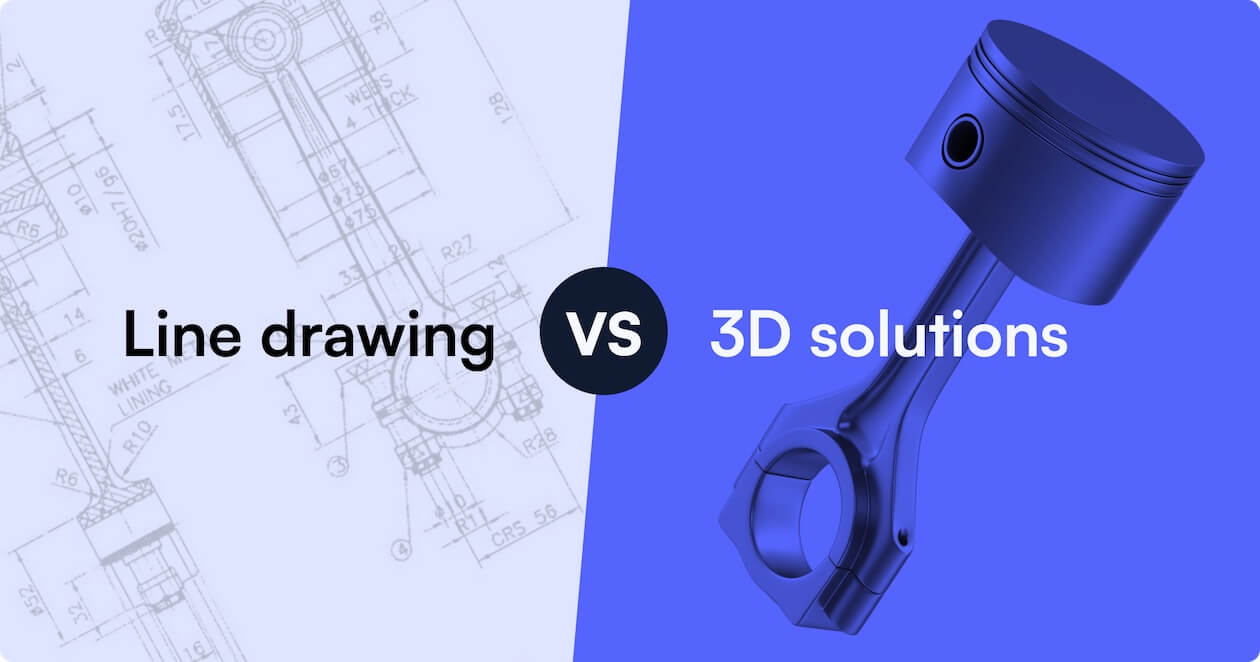
Does the true value of prototyping come from exploiting the strengths of both physical and digital methods?
We discussed this concept with a leading professional services firm, The Design Technology Company (DTCo.). They provide cutting edge mechanical designs and prototypes to a wide range of engineering and manufacturing clients.
We discuss the fact that a hybrid solution could resolve more unknowns in the product development process earlier. In turn, reducing the need for future design iterations, or worse, getting it completely wrong in the first place…
This is the first article in our “expert series with DTCo.”...
What is the purpose of prototyping?
A prototype is often required to validate the accuracy of a product being created and to garner feedback. Essentially, it is a draft design for validation.
There are various reasons and purposes for creating a product prototype, which can include a combination of:
- Accuracy: You might build on to explore how a mechanism functions in reality. Parameters like friction can be notoriously difficult to determine theoretically, a prototype allows the theoretical estimates to be verified empirically.
- Ergonomics: It is nearly impossible to determine how a physical object will 'feel' to touch, hold or use without physically producing it. Prototypes with limited functionality can be built to resolve this unknown
- Aesthetics: A prototype can help you define the colors, textures and materials needed.
- Survey: You can survey people to get feedback, gather information and validate a product within an audience. Or you may be trying to measure reactions to a product when people see it.
- Pitch: Used to determine if you can share an idea with someone to raise funds.
- Testing: Used to validate mechanical elements of a design and determine what tweaks are required. Often used in conjunction with accuracy, if the prototype works.
Where do digital prototypes fit into the spectrum of prototyping?

Prototyping usually means moving out of the conception and analytical space into the physical world. Digital (or virtual) prototypes challenge this physical presence as the status quo.
Digital prototypes can be used to enhance many of the following design stages:
- Survey and Research: If the intention is to determine which design is preferred (from multiple choices), delivering a product in the digital world can garner results quicker and at scale vs physically building an example. This digital enablement can also lower the cost of running physical focus groups while providing more data points.
- Aesthetics: Validating aesthetic desire and appeal for a product can be made easier and more accessible by enabling digital examples.
- Pitch and Sales: Sharing design ideas with investors and customer prospects in a digital format already exist within the use of 2D line drawings, pitch decks, videos, and imagery. The utilization of interactive 3D models can bring complex concepts into a far more engaging and lifelike storyboard to demonstrate.
- User trial and orientation: Users can simulate the usage of the product and see its different orientations in space.
Digital prototyping is unlikely to replace all stages of the process such as accuracy, ergonomics and testing.
Good digital prototypes surface benefits that the constraints of a CAD system do not allow. Benefits such as shareability, deployability, and accessibility in an aesthetically pleasing way.
JigSpace takes this one step further by allowing engagement with the prototype through augmented reality and the ability to interact in a lightweight web AR viewer.
Digital/virtual can enhance rapid prototypes
The Prado Boot Bar Part - Created by DTCo.
“Digital prototyping enables rapid feedback on some design factors, this feedback advances the design maturity of the physical prototype that follows, enhancing its effectiveness and shortening the design process”
Jonathan Bannister
Managing Director at DTCo.
Rapid prototyping
These days the quick print physical forms are often referred to as ‘rapid prototypes’. They are commonly 3D printed objects that assist with evaluating ergonomics i.e. “how does this feel in my hand?”.
Rapid prototypes turn out a rough form of an end part, or close to it. From there it is easy to determine how much space the object requires, how it feels, and how it fits within an environment.
Digital prototyping
Digital prototypes can work hand in hand with physical prototypes. In the digital space, it is easy to manage aesthetics and deploy a digital prototype far and wide to obtain rapid feedback.
A quick 3D print does not provide the excellent aesthetics of a digital prototype, especially one that can be brought to life in context using augmented reality. 3D models and CAD files can be brought to life with incredibly detailed textures, colors and animation that are far more aesthetically pleasing than a rapid version.
Digital, virtual and AR prototypes are unlikely to replace physical ones across the ENTIRE spectrum of the design process. However, most durable manufacturing and engineering businesses still create ONLY 2D imagery and physical prototypes across their prototyping journey.
Digital options can be far more impactful in many circumstances, as the coordination of the physical options can be at an epic scale of time and cost. There is certainly room for a hybrid method to replace the traditional.
It is great to see innovative companies like DTCo. leading the way and disrupting the process, using JigSpace as some of the cornerstone technology to achieve this.



